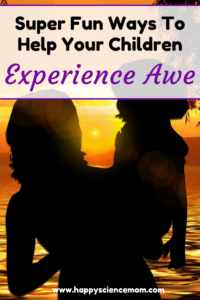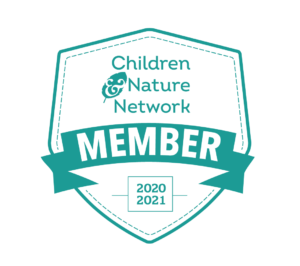 The world offers so many opportunities for us to feel awe, but how can we capture these moments for our children? Fortunately, children are born with a sense of wonder and amazement. “They are naturally curious and interested, with a great imagination and a special ability to see beauty and good all around them,” explains Dr. Brenda Abbey, educational consultant and director of Childcare by Design in Australia. However, children need direction from their parents who can share these moments with them. “We need to model, identify, respond to, preserve, nourish, enrich, and sustain these special moments in our lives.”
The world offers so many opportunities for us to feel awe, but how can we capture these moments for our children? Fortunately, children are born with a sense of wonder and amazement. “They are naturally curious and interested, with a great imagination and a special ability to see beauty and good all around them,” explains Dr. Brenda Abbey, educational consultant and director of Childcare by Design in Australia. However, children need direction from their parents who can share these moments with them. “We need to model, identify, respond to, preserve, nourish, enrich, and sustain these special moments in our lives.”
Actively seeking opportunities to experience awe as a family is so critical to their well-being, and has the power to improve society as a whole. Plus, it’s exciting, fun, and you are bound to learn something new!
The key is to seek out experiences that:
- Involve a sense of vastness that puts into perspective your own relatively small place in the world. This vastness could be either physical (e.g., a panoramic view from a mountaintop) or psychological (e.g., an exceptionally courageous or heroic act of conscience).
- Alter the way you understand the world. For instance, they might make your everyday concerns seem less important, or they might expand your beliefs about the reaches of human potential.
By visiting, recording, viewing, and listening, our children will be exposed to many potential awe moments. To make the most out of these experiences, take the time to ask your children how these encounters make them feel. Reflection reinforces the positive energy and encourages curiosity. Andy Tix, professor at Normandale Community College in Minnesota who wrote about awe on his blog Reflections on Mystery and Awe, noted that “awe seems more likely to thrive in an environment of inquisitiveness and questioning”. So, ask lots of questions and allow your children to do the same.
Visit
In order for children to truly understand awe, they need to experience it. Andy Tix believes that travel provides endless opportunities for awe because we are exposed to stimuli that are outside of our typical routine. He suggests families take “awecations”, instead of just vacations, to places that can inspire awe. If you can’t get away, look for local spots to explore. Please remember to consider your child’s age, interest, and attention span when you choose where to take them.
We can find awe just about anywhere. Here are a few ideas for your next awe adventure:
- Nature: zoos, mountains, forests, hiking trails, beaches, waterfalls, clear starry nights, sunsets, sunrises, botanical gardens, canyons, caves
- Urban: historical monuments, skyscrapers, subway systems, large sports stadiums
- Indoor: libraries; art, science, and history museums; cathedrals; concerts; musicals and other performances; planetariums; aquariums
Record
- Writing: Developing an awe narrative is an effective way for children to capture an awe-inspiring moment. Julie Mann, high school teacher in Queens, New York who also spoke at The Art and Science Of Awe conference, added journal writing to her curriculum as a way for students to reflect about awe for time, space, amazing events, and people who impact their lives.
- Artwork: Ask your children to create their own masterpiece to reflect something that brought them awe. Tap into their talents using drawing, photography, painting, sculpture, or collage.
View
-
- Media: If you are unable to visit a place in person, the next best thing is to observe it using various media tools such as videos, photographs, slideshows, and even 3D or 4D movies at an IMAX theater. Images of nature’s beauty, such as sunrises, sunsets, weather events, and rainbows, tend to easily evoke feelings of awe. Check out these nature documentaries, Jason Silva’s Shots of Awe, and Louie Schwartzberg’s Gratitude Revealed.
- Science experiments: Observing the incredible way science works can be quite powerful for a young child and peak their interest to learn more.
Listen
- Stories: Read awe-inspiring books, poetry, and short stories to your children, such as biographies about great heroes and descriptions of nature, scientific discoveries, great places, and historical events.
- Music: Listen to touching music or play your own. From piano ballads of the great composers to rap songs about changing the world, your child will discover what moves them.
What are your favorite ways to show your children more awe?





Great ideas! My kiddos love going to new places and museums can teach so much!
Loved this! I really wished I went on more of these adventures when I was a kid. So helpful and engaging.